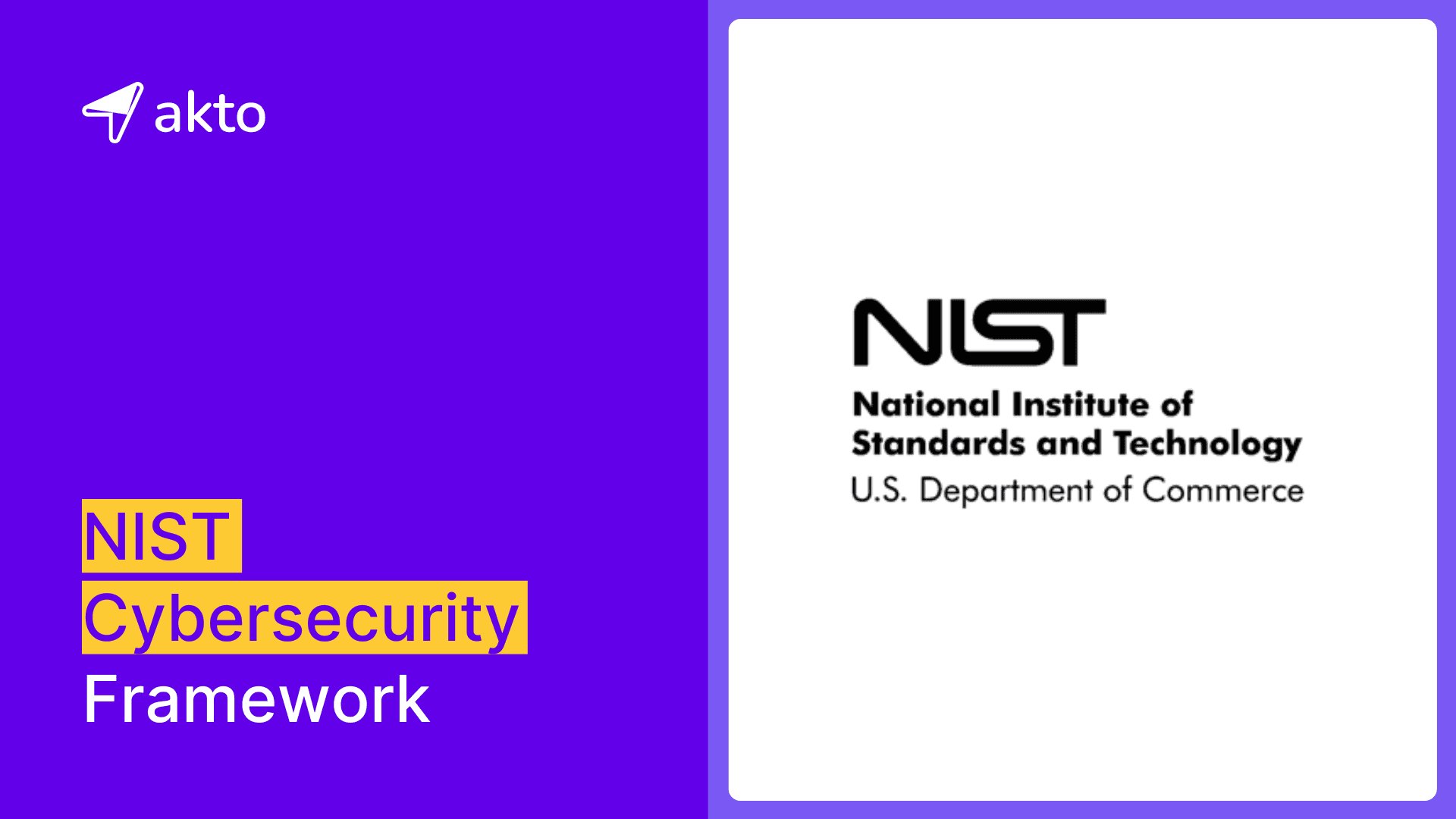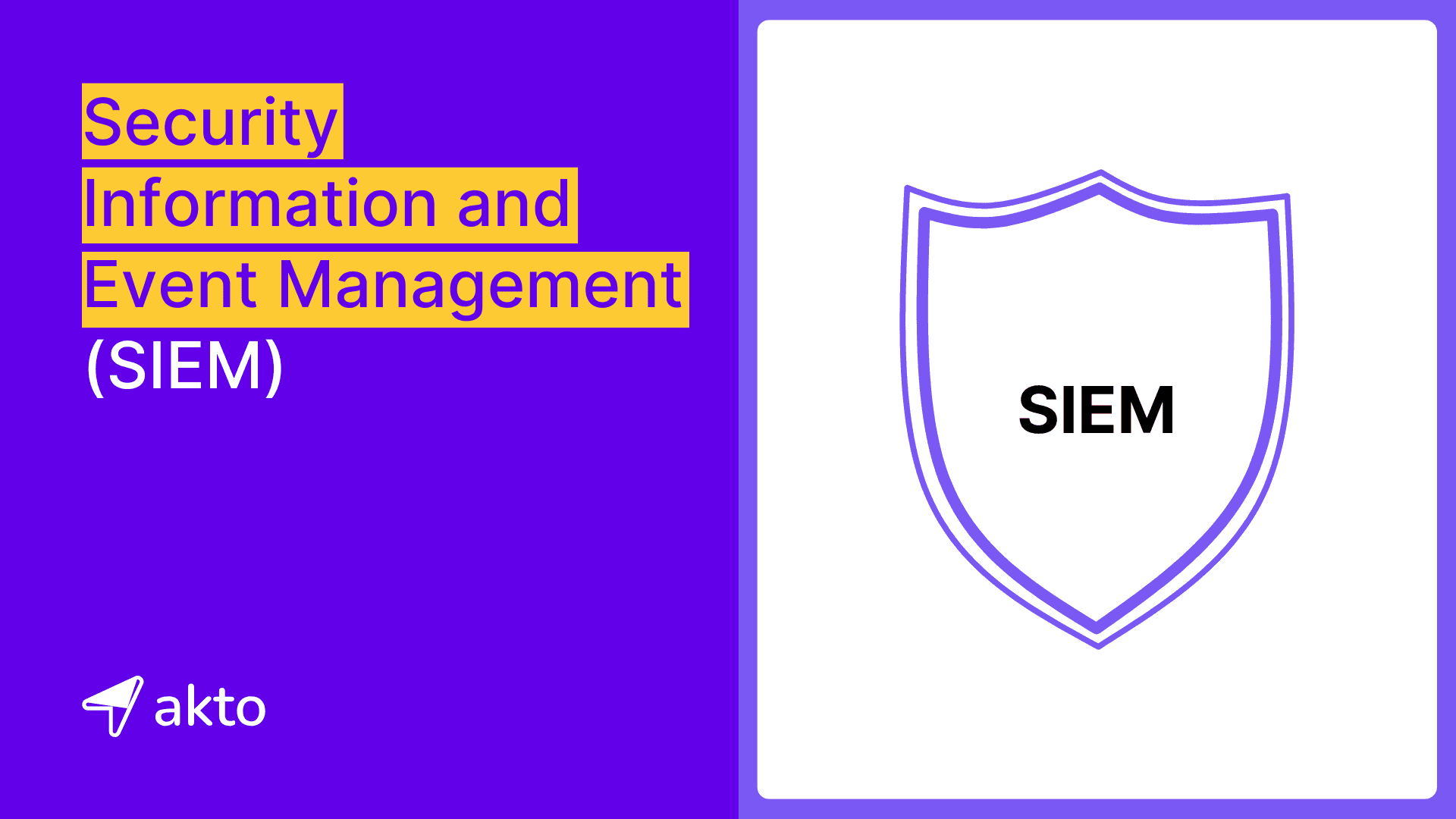Top 7 API Security Trends to watch in 2024
In this blog, you will learn about the top 7 trends in API Security in 2024 - API Security as a Core Part of DevSecOps, AI driven API Security and more.

Ankita Gupta
Jan 9, 2024
About a year and a half ago, I was pitching our solution to one of the largest banks in the world, and someone asked me, "How are you using AI in your product to detect vulnerabilities?" At that time, I didn't really have an answer. Honestly, I didn't think AI was that important or reliable for our product back then. But things have changed dramatically since then.
In the past year, AI has made a huge impact on every industry and practice out there. Some products have become less relevant, while others have vastly improved their efficiency by integrating AI into their development processes. This progress has the potential to completely transform the future of application security as we know it. Here are some important insights from 2023 that emphasize the importance of 2024 trends for API security:
AI Revolution: Developers are under increasing pressure to improve efficiency and embrace automated practices. About 77% of organizations have adopted or exploring AI in some capacity, pushing for a more efficient and automated workflow.
Widespread Influence of AI: Not just the development workflows, AI has impacted every department across organizations.
Emphasis on Automation: The transition from manual labor to automation has been dramatic. About 49% of IT leaders now prioritize investing in automation tools to enhance efficiency.
Industry Leaders as examples: Tech giants like Microsoft, Google, and Github are not just adopting but actively promoting automation and AI.
Slow Progress in Appsec: Despite these advancements, application security has lagged, with a slow improvement rate compared to other IT sectors.
Increased Automation Requirements: Budget constraints in the tech sector have ramped up the demand for automation. IT departments are now required to implement automated security solutions due to budget cuts.
These statistics really paint a picture of the current state of the industry. They also highlight the significant role of AI and automation in shaping the future of API security. It's an exciting time, and I can't wait to see what 2024 has in store for API Security.
1. API Security as a Core Part of DevSecOps
“Our organization is working on automating security checks in our DevOps pipeline.” This was the most popular statement from every security engineer I met last year. Everyone is talking about shifting their security processes ‘left’. The last 4 years really focused on laying the foundation of DevSecOps. The next 4 years will be all about DevSecOps adoption. Today, in organizations, in the absence of DevSecOps automation, APIs have largely been tested at the last moment before the release. Security teams are trying to test for the most obvious flaws in the most important APIs before the release. As teams try to increasingly adopt the shift left approach, they will be looking for API security automation in the DevSecOps pipeline.
74% of organizations according to Gitlab are now actively shifting their security processes to the left, integrating security measures early in the development cycle. This shift represents a significant change from traditional practices where API testing often occurred only at the final stages before release.
The modern release cycle has five phases - Design, Code, Test, Feedback loop and Monitor. Shifting API Security left will mean organizations will be implementing securing APIs in these five phases in an automated way.
Design - Define security requirements and protocols right from the API design phase.
Code - Implement secure configurations and policies as code. This means developers will define secure authentication, authorization, rate limiting, and data encryption protocols right within the code.
Test - Test for API security flaws in your CI pipelines in an automated way.
Feedback loop - API security issues detected in testing or production are quickly communicated back to developers to fix.
Monitor - Continuous monitoring of API traffic helps in detecting and responding to API misconfigurations in real-time.

The Pressure for Speed and Security
Developers are under huge pressure for faster deployments and higher uptime. Organizations will be looking to achieve these goals without compromising on security by moving API Security as a part of DevSecOps in a completely automated way.
This ensures that securing APIs from data leaks is made to be proactive, continuous, and integrated into the fabric of the application development process.
We did a webinar on API Security in DevSecOps recently. Here is what we discussed.
2. AI driven API Security
Security teams are already heavily using ChatGPT and other AI models to detect security flaws or remediate them. In 2024, securing code, APIs, and cloud will be very much driven by AI. Organizations and vendors will be finding ways to analyze large data sets using AI. AI will particularly be used in three ways:
AI-Powered API Code reviews - Imagine a world where developers and security engineers can review code using AI-driven tools and platforms. 36% developers used AI for code review in 2023. GitHub has already integrated with chatGPT to analyze code for code quality suggestions, and this is just the beginning. By leveraging AI and LLM models, developers can receive robust findings by analyzing massive amounts of code. This not only saves time but also enhances the overall security of APIs.
API securing scanning - 65% of developers said they are using artificial intelligence in testing efforts or will be using it in the next three years. Every month, hundreds of new vulnerabilities and CVEs are discovered, making it challenging to find business logic flaws and keep up with the latest threats. In 2024, security teams will rely on AI-powered platforms to automate the scanning process and stay ahead of potential risks. By analyzing large datasets and continuously updating vulnerability data, these platforms will provide organizations with real-time insights and help identify and mitigate API misconfigurations and threats. Automated API scanning powered by AI ensures a proactive and robust approach to API security.
API threat detection - Threat detection is a critical aspect of API security, and AI is playing a significant role in this area. With the help of AI, Web Application Firewalls (WAFs) and Security Information and Event Management (SIEM) tools can analyze vast amounts of data to detect and monitor API misconfigurations and potential threats. By leveraging AI's capabilities, organizations can enhance their ability to identify and respond to evolving cyber threats, making their API security more resilient and proactive.
The adoption of AI in API security represents a shift towards more intelligent, proactive, and efficient security measures. As organizations continue to embrace AI-driven tools, the landscape of API security is set to be more resilient and responsive to the ever-evolving cyber threats.
3. LLM Security as part of API Security
On average, an organization uses 10 LLM models. Often most LLMs in production will receive data indirectly via APIs. That means tons and tons of sensitive data is being processed by the LLM APIs. Ensuring the security of these APIs will be very crucial to protect user privacy and prevent data leaks. Some ways in LLMs can be abused today to sensitive data leaks:
Prompt Injection Vulnerabilities - The risk of unauthorized prompt injections, where malicious inputs can manipulate the LLM’s output, has become a major concern.
Denial of Service (DoS) Threats - LLMs are also susceptible to DoS attacks, where the system is overloaded with requests, leading to service disruptions. There's been a rise in reported DoS incidents targeting LLM APIs in the last year.
Overreliance on LLM Outputs - Overreliance on LLMs without adequate verification mechanisms has led to cases of data inaccuracies and leaks. Organizations are encouraged to implement robust validation processes, as the industry sees an increase in data leak incidents due to overreliance on LLMs.

OWASP’s Role in LLM Security
Recognizing the urgency, the Open Web Application Security Project (OWASP) has declared LLM Security as a flagship project. This initiative is significant in shaping industry standards and best practices. As we move through 2024, a growing number of organizations are aligning with OWASP's guidelines, with a large % of enterprises expected to adopt OWASP standards for LLM security by the end of the year.
4. Rise of GraphQL Security
GraphQL, the query language for APIs, has seen a remarkable adoption rate. A report from Gartner predicted that by 2025, more than 50% of enterprises will use GraphQL in production, up from less than 10% in 2021. This surge underscores the critical need for robust GraphQL security measures.
With GraphQL's rise, its security concerns have come to the forefront, particularly introspection, which poses a substantial threat. Introspection allows clients to query the schema of a GraphQL API, potentially exposing sensitive information. As a response, organizations are prioritizing the security of GraphQL in several key ways:
Continuous Vulnerability Scanning: Proactive scanning for graphQL vulnerabilities will be a standard practice.
Top GraphQL Vulnerabilities: Specific vulnerabilities are under scrutiny, including:
Inadequate Rate Limiting: Ensuring proper rate limiting is crucial to prevent DoS attacks.
Improper Authorization Checks: Strengthening authorization processes to prevent unauthorized data access.
Injection Attacks: Mitigating the risk of injection attacks through rigorous input validation.
Misconfigured HTTP Headers: Implementing strict configurations to protect against common web vulnerabilities.
Focused Efforts on Introspection Risks: Organizations are dedicating resources to address introspection risks. Implementing measures like schema hiding and access control can mitigate potential threats.
As GraphQL continues to gain traction, focusing on continuous vulnerability scanning and addressing specific threats will be key in ensuring the secure utilization of GraphQL.

5. Passwordless Authentication
Credential stuffing, primarily driven by brute-force attacks, was responsible for some of the largest cyberattacks in the past year such as that of 23 and me. This alarming trend has compelled organizations to rethink their approach to API authentication.
Over the past 4-5 years, the shift towards passwordless authentication has gained considerable momentum. Gartner believes around 20-30% of global organizations will have implemented some form of passwordless authentication for their APIs by 2025. This shift represents a fundamental change in how user authentication is conceptualized and implemented.

Implementing Passwordless Authentication in APIs
Passwordless authentication methods, such as biometric verification, token-based systems, and one-time passwords (OTPs), offer a more secure and user-friendly alternative to traditional password systems. By eliminating passwords, these methods significantly reduce the risk of credential stuffing and brute-force attacks.
For organizations prioritizing security, the adoption of passwordless authentication is no longer an option but a necessity. Integrating these methods into the design and code phase of API development is crucial to build a robust security framework. As we progress through 2024, passwordless authentication is poised to become the standard for secure user authentication, thus greatly impacting broken authentication attacks.
6. API Documentation automation will be key trends
Swagger, a widely used framework for API documentation, has become a cornerstone in modern API development. With more than 50% of developers globally now relying on Swagger for their API documentation needs, the push towards automating this process has gained momentum.

In the past year, conversations with over 200 organizations revealed a striking trend: 90% are actively seeking solutions to automate their API documentation. This marks a significant shift from traditional methods where developers manually curate documentation – a process often fraught with delays and inconsistencies.

Key Insights into Swagger Automation Adoption
More and more organizations are now transitioning to automated Swagger documentation. This shift represents a departure from outdated, manually curated documentation practices.
Benefits of Automated Swagger Documentation:
Timely and Consistent Updates: Automation allows for real-time updates to documentation, reflecting changes in the API instantly. Security automation, client side SDKs and API validation become consistent, and easier too.
Enhanced Developer Productivity: By automating documentation, developers can focus more on core development tasks, boosting overall productivity.
Improved Accuracy: Automated documentation reduces human error, ensuring higher accuracy and reliability in API documentation.
7. Compliance with new privacy regulations
Increased Focus on Data Security:
More Stringent Requirements: Regulations like the California Privacy Rights Act (CPRA) and the Virginia Consumer Data Protection Act (VCDPA) are bringing stronger data protection requirements, placing more emphasis on API security for handling sensitive information. Organizations must ensure APIs comply with these regulations, including proper access control, data minimization, and data breach notification protocols.
Zero Trust Approach: The "zero trust" security framework is expected to be increasingly applied to API security, demanding strong authentication and authorization for every API request, regardless of the source. This will minimize the potential for unauthorized access and data breaches.
New Data Broker Registration Laws and the California Delete Act
Data Broker Registries: In states like California, Vermont, Oregon, and Texas, data broker registration laws require companies to provide contact information and a link to their privacy policy on a public registry. This transparency can affect APIs that manage or transmit data brokered information.
California “Delete Act”: This act mandates that California consumers can opt-out of all registered data brokers with a single click, and data brokers must refresh deletion requests every 45 days. APIs handling such data will need mechanisms to comply with these requirements, impacting how they manage and delete consumer data.
EU-U.S. Data Privacy Framework for Cross-Border Data Transfers
Data Transfer Compliance: The EU-U.S. Data Privacy Framework provides a mechanism for lawful data transfer across the Atlantic. APIs dealing with transatlantic data transfers will need to adhere to this framework, affecting how they handle, store, and transmit data.
Health and Financial Data Regulations
Health Data: The FTC’s Health Breach Notification Rule amendments mean that APIs dealing with health data must have robust security measures to prevent unauthorized disclosures and data breaches.
Financial Data: The CFPB's Personal Financial Data Rights Rule governs access to personal financial information. APIs in the financial sector will need to facilitate data access revocation requests and delete data when required, affecting how they manage financial data.
Data Privacy in Canada and Australia
Canadian Digital Charter Implementation Act: This act includes the Consumer Privacy Protection Act (CPPA) and the Artificial Intelligence and Data Act (AIDA), affecting APIs that deal with personal and AI-generated data.
Australian Privacy Act Overhaul: With potential changes to the Privacy Act, APIs in Australia may face new requirements for data privacy and protection.
Specific Industry Laws: Washington’s My Health My Data Act
Consumer Health Data Protection: This act regulates personal health information and applies broadly to any entity dealing with consumer health data in Washington. APIs in healthcare will need to incorporate these regulations into their security and privacy protocol
Compliance with new privacy regulations in 2024 will drive significant changes in API security, requiring APIs to adapt to a range of legal and regulatory frameworks.
Conclusion
The year, 2024, presents significant opportunities for API security. With AI-driven measures, integration into the DevSecOps pipeline, and the adoption of LLM models, organizations can proactively address vulnerabilities. Additionally, focusing on GraphQL security, passwordless authentication, automated API documentation, and compliance with privacy regulations will further enhance API security. By embracing these trends, organizations can secure their APIs, protect user data, and stay resilient against API threats.
Keep reading
API Security
8 minutes
NIST Cybersecurity Framework
The NIST Cybersecurity framework provides organizations with a set of standards, guidelines, and practices to develop strong cybersecurity practices for managing cybersecurity risks effectively.
API Security
7 minutes
API Security Audit
An API Security Audit evaluates APIs, identifies potential risks, and strengthens the organization's defenses against security breaches and cyber-attacks.
API Security
8 minutes
Security Information and Event Management (SIEM)
SIEM aggregates and analyzes security data across an organization to detect, monitor, and respond to potential threats in real time.
Experience enterprise-grade API Security solution



